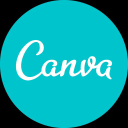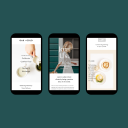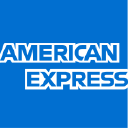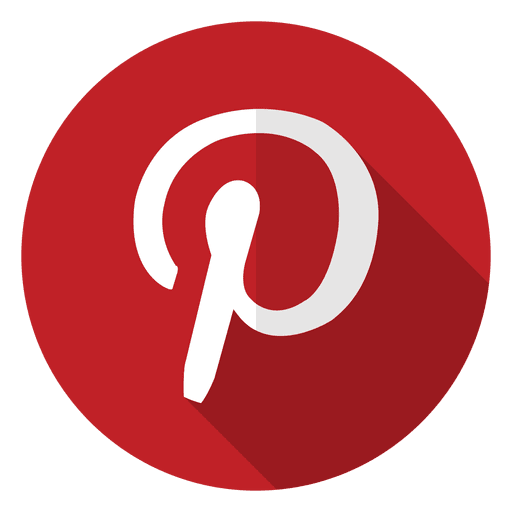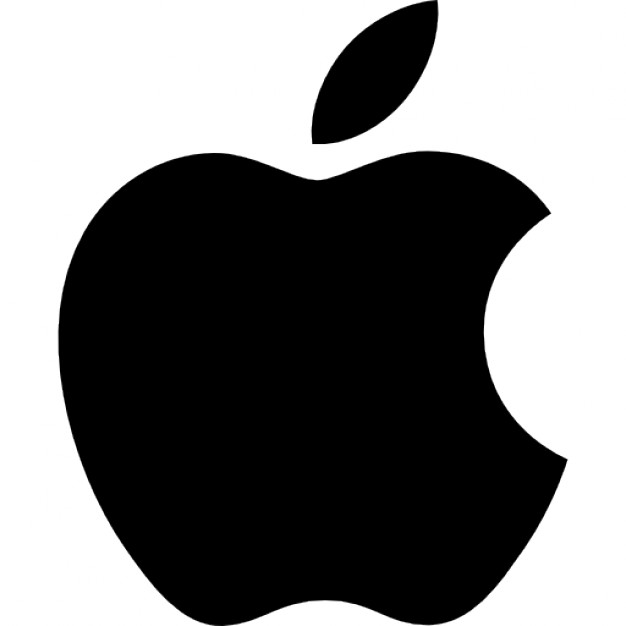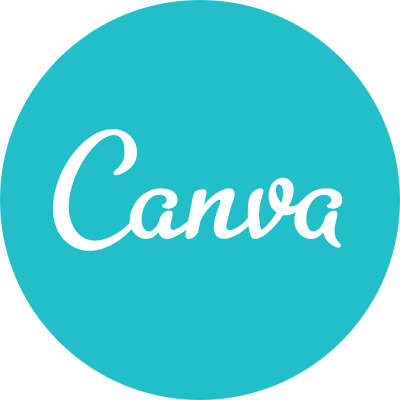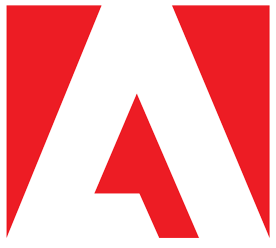How I Started A Personal Styling Service Business And Grew It To $6K/Month Revenue
Hello! Who are you and what business did you start?
Hi! My name is Ashlyn and I’m the founder of Fashivly, an online personal styling service. At the end of the day, we like to say we aren’t just helping people find clothes, we’re helping them find their confidence through personal style.
Our industry-experienced stylists find and put together head-to-toe accessorized looks based on body type, lifestyle, budget, and desired style goals and send digital looks and shoppable links straight to your inbox. We’re solving the problem of getting dressed every day, no matter what the occasion.
We work with clients from every walk of life but they each have a unique primary problem they’re wanting to solve. Some of our clients are executives and editors at leading tech, media, and sports companies in New York and Los Angeles. They love fashion but often don’t have the time (or energy) to create the elevated, cool, and creative looks they need to show up every day.
Another type of client we serve is someone who feels like they’ve lost their sense of personal style (and self) with a recent life change. Many of us went through this post-pandemic, but this person might also have just become a new mom, moved to a new city, or experienced a size change.
Our last client type loves fashion, just like our other two, but this person feels overwhelmed by the number of choices, trends, and content they’re consuming every day. They love expressing themselves through clothing but they want to hone in on their style and figure out what makes them feel uniquely themselves; while still discovering new brands and staying at the forefront of fashion.
We’ve had 475% growth year over year and are averaging $5,936 in revenue every month, all from organic social media and word of mouth.

What's your backstory and how did you come up with the idea?
Coming from a small town in Appalachia, I always knew I loved fashion but I didn’t know until college that a career in it was something attainable for me. After applying to hundreds of internships and post-graduate programs in bigger cities at the prompting of a guidance counselor, I finally received an opportunity for a short internship with NYFW and an acceptance letter to study Luxury Fashion Management and Marketing at SCAD in Atlanta.
After a few more internships I landed at Belk, Inc. in Charlotte, NC with my husband Sage where we’ve lived for the last 10 years. I gained experience in everything from branding, creative production, and styling of course- eventually leading and managing a styling team.
In late 2019, I attended Story Conference with my team at the time and had what I can only describe as a soul moment. I had always been interested in starting my own thing, I was working on business plans and ideas as a hobby occasionally.
I had a realization that as someone who always gave 110% to whatever organization and role I was in, I would have to quit my job to pursue starting a business. I decided at that conference that I would quit my full-time job in 2020 and THEN figure out what idea was worth pursuing.
I told no one for 6 months except my husband, and we started saving up and downsizing- selling one car and moving into a smaller apartment in March 2020.
March 2020; was also the month that the world shut down. I shifted my focus away from my original plan and poured myself into supporting my team and my organization as we navigated how to operate in an unprecedented situation.
By the end of May though I still felt like I needed to make my cliff jump. I told my boss that I was giving my resignation.. In the middle of a pandemic… to start a business that I didn’t even know what it would be yet. She rightfully thought I was NOT OK, and gave me plenty of time and opportunity to change my mind.
I loved my team and loved the work we were doing. It was the most difficult career decision I had ever made, especially in the circumstances we were all surrounded with, but I knew that if I didn’t jump now I likely never would.
I spent the next 6 months getting up every day and spending 6-8 hours reading, researching, and fleshing out potential business opportunities. There was one that was like Uber but for products (ever wanted to rent a big screen for the Super Bowl or a nice camera just for a vacation?) and another called “Take Care” where I would have bought a vintage car and drove around to different neighborhoods peddling cool self-care products like flowers, candles, and wine.
Spoiler alert!- the government will not let you sell wine out of the trunk of your car. Who knew?
In the Fall of 2020, a friend reached out and asked if I would style her. We were 6 months into the sweatpants era and everyone was feeling like a lesser version of themselves.
There wasn’t an “aha” moment when I started working on what would become the first version of our product. I was just doing something that I knew how to do- put together outfits.
Take us through the process of building the first version of your product.
When that friend first reached out my initial thoughts were that I’d never really done traditional personal styling (I was on the brand/commercial side) and I also still wasn’t quite comfortable being up close and personal with someone and doing the hours of in-store shopping that are typically associated with that type of service.
So I went back to what I knew. At a previous company, my team and I had put together digitally styled looks (sometimes with flat lay images from websites and sometimes with hanging up clothes and accessories on a rack and snapping iPhone photos of them ourselves) to present to buyers, execs, and brands for approval before sending them off to be photographed for ads.
These preview images also helped the teams on set know exactly what went with each look and how it should be put together. It was a perfect visual guide, complete with item descriptions and shot names.
I decided to use a version of this to create a digital lookbook of sorts for my friend. I pulled all the pieces online, created the “looks” with the website ecom images and Photoshop, and sent her a Google doc with all the links so she could purchase anything she loved.
The unintended by-product of doing a styling session this way was that, unlike an in-person meet-up, it was extremely shareable on social media. She posted her style guide on Instagram, and I immediately got requests from 6 others (some friends, and some people I didn’t know) for a guide of their own.
For the first 5 months of the business, I operated with almost zero start-up costs. I took client requests from Instagram and payments through my personal Venmo and PayPal accounts.
I used my email address to send out the style guides, along with a Google doc of shoppable links. The only cost associated with any of this was the $19 a month Photoshop subscription that I used to put together the looks and the digital guide. There was no business name and no website, and yet total strangers were sending me cold DM’s every day and agreeing to Venmo me money in exchange for an unorganized Google doc that they had to sort through themselves to find the items they wanted to buy.
By November 2020 I started to think that this might be my business idea. I signed up for the free MailChimp plan and started collecting email addresses and sending a weekly email blast with the coolest thing I found on the internet that week.


Describe the process of launching the business.
January and February of 2021 were tough months. I had a lot of early success testing my product in the fall and was working 7 days a week in November and December filling client requests from DM’s. When the business started to fall off in those first few months of the new year I had to decide if it was just seasonal and I needed to push forward with launching the business officially, or if I needed to call it quits.
Failure only happens when you give up. If you keep trying things and learning, you’re only getting closer to success.
I decided to push forward and filed paperwork under the name “Fashivly” on March 13, 2022, after working with a few friends to brainstorm the name. A month before, I secured the website domain and social handles and started planning a branding shoot. I still had quite a bit of saving, so I spent around $2,500 on the website and hosting setup as well as travel for myself and a photographer and videographer crew to fly to Phoenix, AZ, and Los Angeles, CA to shoot our first brand images.
I wanted to shoot our very first client, the person who had spawned the entire business by her request for a styling session, along with my sister and some of her friends in a city that inspires me. I also wanted to use those images and people to garner attention outside of the city I was currently in, and where most of our clients were at the time.
For the website build specifically, I used Squarespace but purchased a designed template from an amazing Aussie designer that had the personality and uniqueness we were looking for… her work looks custom but is much cheaper than a custom build!
For additional design, a friend found a font that could work as our logo and another graphic designer friend further customized the site for us with typography, brand colors, and placing the images we’d shot.
The biggest lesson I learned from that spring and summer was that being overly ambitious is a great tool to push yourself forward, but you also need to temper that with a dose of reality when you're a team of just yourself and a few friends lending their talents here and there.
I originally thought our website would be up and running by June 1, but it wasn’t until late August that it finally went online. During that time, the business had picked back up and I was working on multiple style guides every day in addition to running our social channels, organizing content shoots with more clients in cities around the country, and trying to build the back end of the business using more than just the free tools I’d been using so far.
We had a fully built-out content strategy for Instagram and a growing email list by the time we officially launched. Building excitement around that helped fuel our growth.




Since launch, what has worked to attract and retain customers?
Social media, and Tiktok specifically, has been the biggest growth source for our business! As a self-funded company, organic social is one of the only tools we have to market cheaply and as much as we want. We started out on Tiktok in early 2021 and have steadily grown our audience to almost 50K.
For that platform specifically, it's all about connection and storytelling. Our audience took off initially when I shared a personal insight about sizing discrepancies and continued to grow when I started sharing educational content around fashion, style, and trends that was easily digestible and presented in a straightforward approach of simply talking to a potential client like a friend instead of from a traditional brand perspective.
We try to respond to almost every comment and have kept creating helpful content like what type of shoes to wear with what type of pants, seasonal trend updates, sale PSAs, and of course personal style tips.
Our most successful months last year ($10K months vs our average of $5K) were directly correlated with an organic viral Tiktok video that we created or that someone else posted talking about our service.
One example was from an Australian creator who had recently had an article in the NYT Style section about using TikTok to help rediscover her style. She found us and asked if we’d like to do a style guide for her right after that article was published, and we created a style guide that she shared on her channel.
That post alone launched our business in Australia and New Zealand, which now make up about 5% of our clients.
Another example of one of our first paid campaigns was this fall with an up-and-coming (at the time) fashion creator, PigMami. While I can’t disclose what we paid for the partnership, we saw a return of 16x in revenue for that month. We also garnered some of our most high-profile clients to date (editors from WWD, NYT, and others) that referenced her style guide as inspiration for their own.
Based on these and other examples from last year, we launched full force into putting our first true marketing dollars behind working with Tiktok creators. December and January both have not brought the returns we were hoping for, nor the success that last year did with these types of campaigns.
A lot has changed in the Tiktok landscape (significantly more creators vying for the coveted FYP space, as well as trends like “de-influencing”) but we’re committed to continuing our strategy through February and re-evaluating after that.
Our additional marketing efforts consist of a weekly email newsletter where our community gets two ways to wear a favorite piece we saw that week, along with organic Instagram and Pinterest content. While the strategies are slightly different for each platform we still aim for 60-70% educational or informational content, 10-20% “trending” content, and 10% hard sell of our core product across all our social platforms.
Lastly, we launched a subscription offering in the spring of last year. We charge clients automatically at the beginning of spring, summer, and fall but they can use their 3 guides a year however and whenever they like. They currently receive a $10 discount on every style guide, and we hope to launch more unique content and touchpoints with these top clients later this year.
How are you doing today and what does the future look like?
At two years in (officially), we aren’t profitable, but we’re just now starting to spend more than we bring in instead of intentionally breaking even. We hired an agency in August of last year to rebrand and help us get ready for more of a national stage outside of our social platforms and to hopefully seek outside funding in 2024.
We put the entirety of that $10K cost on credit cards and recently took out a working capital loan to fund our paid social campaigns and some bigger out-of-home marketing dreams we have for the next few months.
Our current monthly traffic is around 2,000 with an average conversion rate of 3.66%. We have a team of 2 full-time staff (myself who is currently unpaid and a brand director) and 6 part-time contract stylists that support a client list of almost 900 so far. I shared earlier that we’ve had 475% YOY growth, and we’re still experimenting with pricing and our product offering to give the best value to our clients while supporting our stylists and our marketing efforts.
We’re currently operating at about a 30% margin on guide revenue, factoring in our fixed monthly costs and the stylist payment for each guide. We’re reinvesting that 30% back into marketing efforts.
An additional revenue source we have commissions on anything a client purchases from our selections. We have an AOV of $150 and earn an additional $1,500 on average/month from sales commissions that we reinvest into our quarterly branding shoots.
Use the things you have at your disposal whether that's free tools you can cobble together to test your idea, or the help of people in your circle to get you to the next level.
Our short-term goals for this year are to hit $200K in revenue and gain traditional media placements in the places our potential clients are already consuming media.
Our long-term goal is to be the go-to source for anyone that has the question “What should I wear?” We think we have a minimum market opportunity size of $536 million. We’re going after Stitch Fix.
Through starting the business, have you learned anything particularly helpful or advantageous?
I think the biggest lesson I’ve learned in this business is getting over the fear of failure. I’ve come to redefine that term not in the sense of I tried something new and it didn’t work, but rather that failure only happens when you give up. If you keep trying things and learning, you’re only getting closer to success.
Another big lesson I’m learning is that rest is necessary. I’ve always been a stickler for 8-9 hours of sleep every night, but I’ve struggled with giving myself any regular days off from work. For most of 2022, I worked 7 days a week and just crashed when necessary for a day or two. So far in 2023 I’ve committed to one day off per week (it’s been difficult as we all know our brains rarely turn off from thinking about our business) but I’m already seeing an increase in my overall productivity, creativity, and thinking.
What platform/tools do you use for your business?
We use so many different tools for our business every day! My three favorites are Squarespace, Jebbit, and Flodesk. My strengths are not tech-related, and all three platforms are both easy to use and look beautiful with very little knowledge or effort needed.
Squarespace has a host of analytics tools that help guide our business decisions every day. We chose that platform because of all the additional features available like integrated email sends, subscription options, and scheduling- a tool that we hope to use in the future but just haven’t built out yet.
Jebbit is an online quiz platform that we use for our client questionnaires after they book a style guide. It again follows the same theme of looking custom, while being hosted by a 3rd party platform.
There is a dashboard full of analytics, and the ability to host as many different quizzes as you’d like; we hope to start a lead generation quiz in the near future to capture potential new clients. They work with everyone from small and medium size businesses to massive industry leaders in tech and retail on interactive solutions.
Lastly, Flodesk is the easiest-to-build email platform on the market (in my opinion). While they don’t have as many email marketing customization tools as other platforms, for where we’re at in our business it’s the perfect tool for our weekly email blasts. They just launched checkout, so if you are an early-stage business wanting to test your idea before investing in a full website, check out Flodesk.
What have been the most influential books, podcasts, or other resources?
This is tough to narrow down because I’ve read SO MANY books that have been so helpful over the last 3 years, and I listen to podcasts daily around specific subject matters that I need to learn but if it weren’t for one singular book, Fashivly might not be in business today.
To go back to the most crucial time period in the business, I was reading Elaine Welteroth’s memoir “More Than Enough” in January of 2021 and the phrase “Do It Anyway” was the mantra I needed to push forward in officially launching. I even wrote a personal blog post about it that I published on Feb 9th, 2021, the same day I purchased the domain for fashivly.com:
In the very last lines of the last chapter of Elaine’s book she writes -
“When you find yourself existing in the space between dreams realized, parts of you will feel too big for where you are, while other parts of you will feel too small for where you’re going. Go anyway. Do not wait. Do not wonder if you can. Do not ask for permission. When you get lost, it’s okay to stop, to look up, to look within for the answers- they’re always there. And when the world tells you to shrink, expand. Remember: you have done enough. You are enough. You were born enough. The world is waiting on you.”
Advice for other entrepreneurs who want to get started or are just starting out?
While this can't work for every type of business, I'm an example of and a firm believer that you should build as you go especially if you're self-funded. When I first started out, I used a free version of everything and I didn't put any money into it until I was already making money from the business I was testing.
I think there's almost too much emphasis and busy work associated with the typical things you think of when you start something and more times than not they just become excuses. Not having the money to hire a graphic designer to make you a logo isn't keeping you from starting a business. Pick a font that you like and use that until you can afford to have something better.
You don't need to launch a website before you can have to pay customers in a lot of industries. Figure out a free way to test your idea first before you sink capital into building something that may not be right for what your first customers end up telling you. Use the things you have at your disposal whether that's free tools you can cobble together to test your idea, or the help of people in your circle to get you to the next level.
Are you looking to hire for certain positions right now?
We’re always on the lookout for stylists to join our team! If you have industry experience and are looking for part-time remote work send an email with your resume and portfolio to ashlyn@fashivly.com
While we’re still at least another 6 months away from this, our next full-time hire will likely be an operations manager. If you love all things process related and managing the flow of information, projects, and people let’s connect!
Where can we go to learn more?
If you have any questions or comments, drop a comment below!

Download the report and join our email newsletter packed with business ideas and money-making opportunities, backed by real-life case studies.

Download the report and join our email newsletter packed with business ideas and money-making opportunities, backed by real-life case studies.

Download the report and join our email newsletter packed with business ideas and money-making opportunities, backed by real-life case studies.

Download the report and join our email newsletter packed with business ideas and money-making opportunities, backed by real-life case studies.

Download the report and join our email newsletter packed with business ideas and money-making opportunities, backed by real-life case studies.

Download the report and join our email newsletter packed with business ideas and money-making opportunities, backed by real-life case studies.

Download the report and join our email newsletter packed with business ideas and money-making opportunities, backed by real-life case studies.

Download the report and join our email newsletter packed with business ideas and money-making opportunities, backed by real-life case studies.

